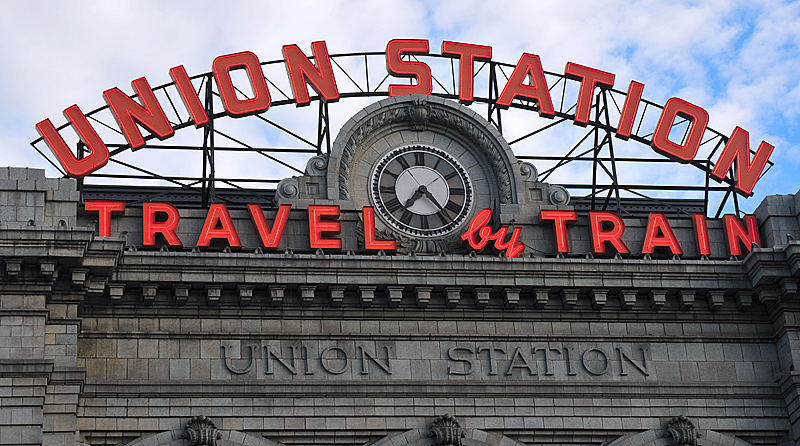






One year later I was back. Now on my way east, I detoured once again to Durango on my way from LA to a new job in Dallas. Not much had changed since 1965, but a great deal has changed since. On this trip, I was not fortunate in finding freight activity. Otherwise, the visit was much like the previous year done in reverse. Once again, I toured the yard in Durango, rode the train to Silverton, and hurried on my way via Chama. But I added a detour to Monero along the way just to check the place out.
I almost didn't make it. My 1957 Chevy, fully loaded with all my belongings, kept losing power and it was getting serious. Saturday I rode the White Mountain Scenic Railway in remote McNary, Arizona then made a mad dash for Holbrook convinced that I would be lucky to make it there and would certainly never make it to Durango or Dallas without some remedy. I had already taken the car to several mechanics in California, but none was of any help except in helping lighten my wallet. I was desperate to find competent help, but it was late Saturday afternoon, of Labor Day weekend and the biggest town around was Holbrook, Arizona. I was in a panic even before I arrived at the dealership, even more so when it looked closed and deserted. Fortunately, one man was still there just closing up. He immediately diagnosed the problem as a failing fuel pump, replaced it quickly and for a reasonable price. I was on my way greatly relieved in less than an hour.
I arrived in Durango in time to take a photo or two of the arriving train from Silverton. Then I followed it back to the yard to see what was going on there.

473 at mile post 454 -- Sunday's Silverton train arriving back in north Durango.

Back in the yard, the sun was setting by the time 473 was serviced.

At the sandhouse.
For my third trip to Silverton, I managed to stake out the right rear corner of the trailing rider gon. I was anxious to get a good shot or two showing the train ahead especially on the Highline. Not only that but my position afforded me a great view of the tracks behind.

From the rear corner of the trailing open car I was able to get this shot. Once again 473 is doing the honors.

A little farther along the branch's far famed Highline.

A little engine smoke --- the view looking back.

I always thought Needleton Tank especially photogenic.

Nearing Silverton. The 212 had not been converted from a combine.

The Detroit Mine over a waterfall just south of Silverton.

Our destination, Silverton, Colorado, has always been an idyllic place for me.
Back in Durango, I had time for a longer visit to the yard. I watched as the 473 was serviced. The 484 was hot and spotted next to the roundhouse just where she was a year before. At the roundhouse I found 488, 476 and 478.

Once again, 473 being serviced.

It was exciting to see so many engines at the roundhouse -- both passenger and freight. At the time, only the three remaining K-28s, the 470s, were used in passenger service.

473 and the now long gone coaling tower.

484 hadn't been idle, but 464 had not moved in years.

Blowing down the air reservoir.
The next morning, I drove out to watch the morning departure behind 476, then went back to the yard for one more look. After that, it was onward toward Chama and points beyond.

I seemed to find 484 from this angle irresistible.
On the way, I decided to take a detour to see a little of the lesser known line at Monero. Monero had once been a center of coal mining and lumber milling, but by 1966 all I saw was a water tank, a coal loading dock and a few scattered small buildings. Apparently this land had once been heavily timbered, but due to heavy logging many years before, this was no longer the case. I took a couple of shots and backtracked to the main road and onward to Chama.

Facilities at Monero included this coal loading dock. E. L Trump, once a fireman and a communications engineer on the railroad, tells me that Monero coal was favored by engine crews and was loaded into both tenders and gondolas from here. He also believes the vertical wires on the telegraph pole were actually twisted "drop wires".

There was also a water tank at Monero.
By the time I reached Chama, it was getting late. Once again nothing seemed to be happening on the railroad, so I took just one photo and hurried on my way.

Chama, New Mexico, a quiet place in 1966.